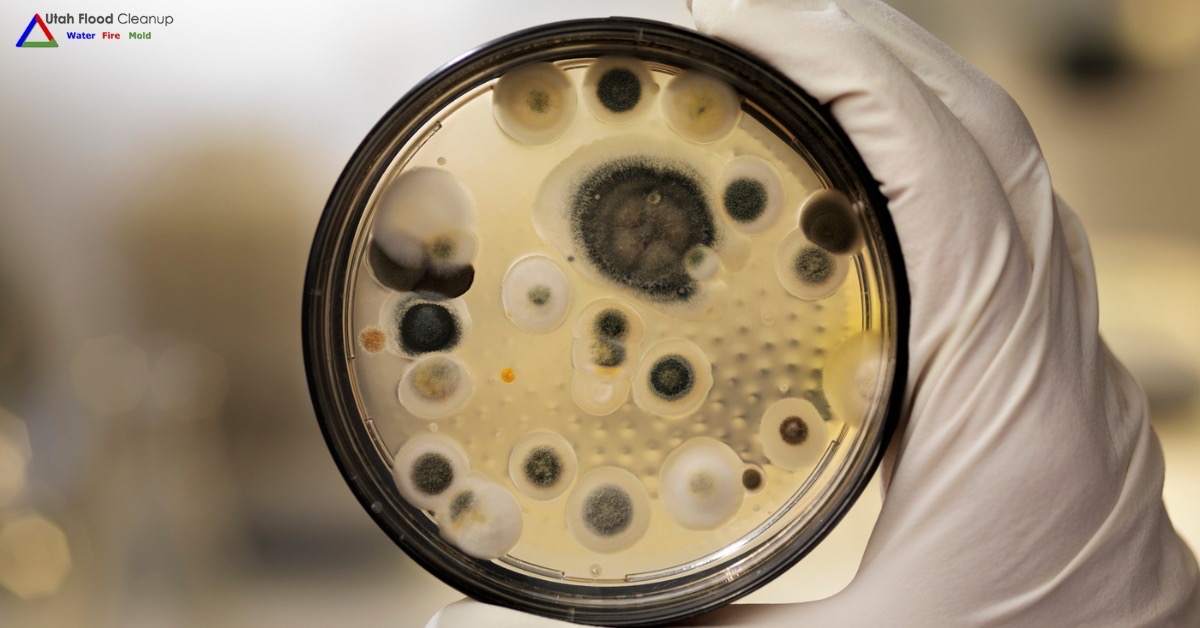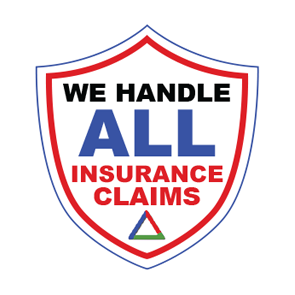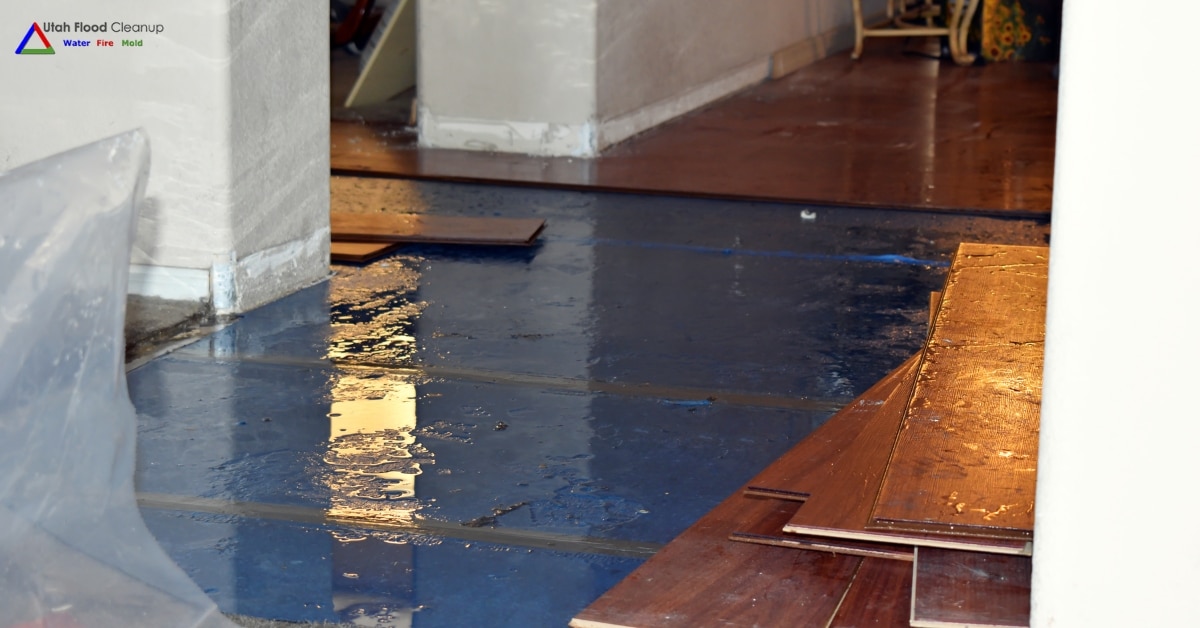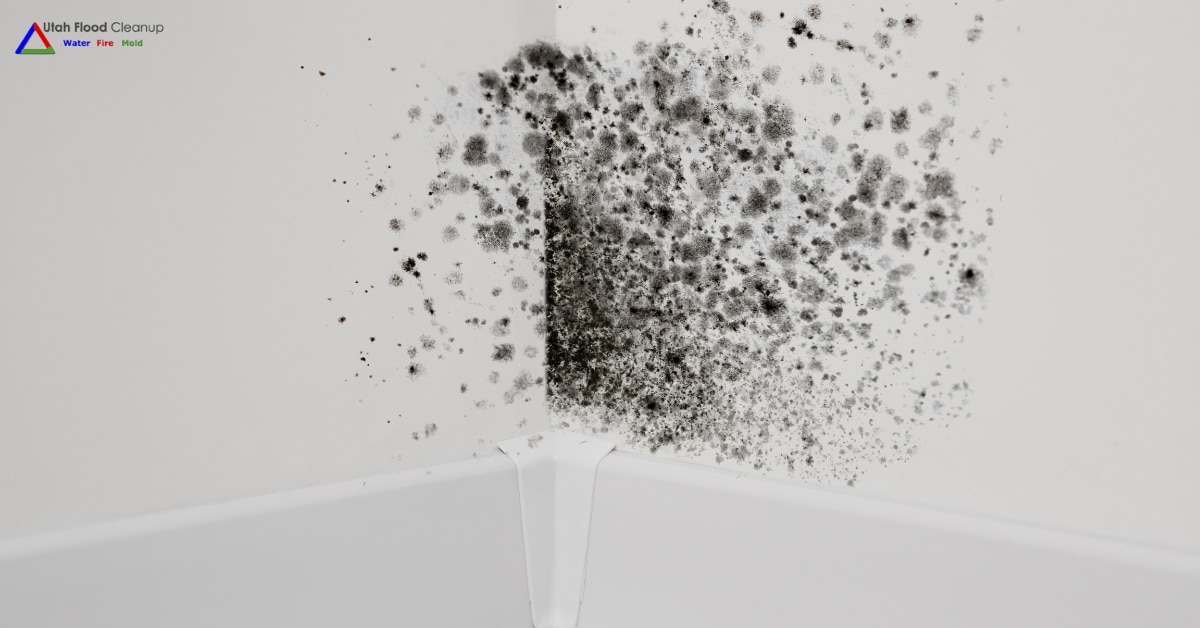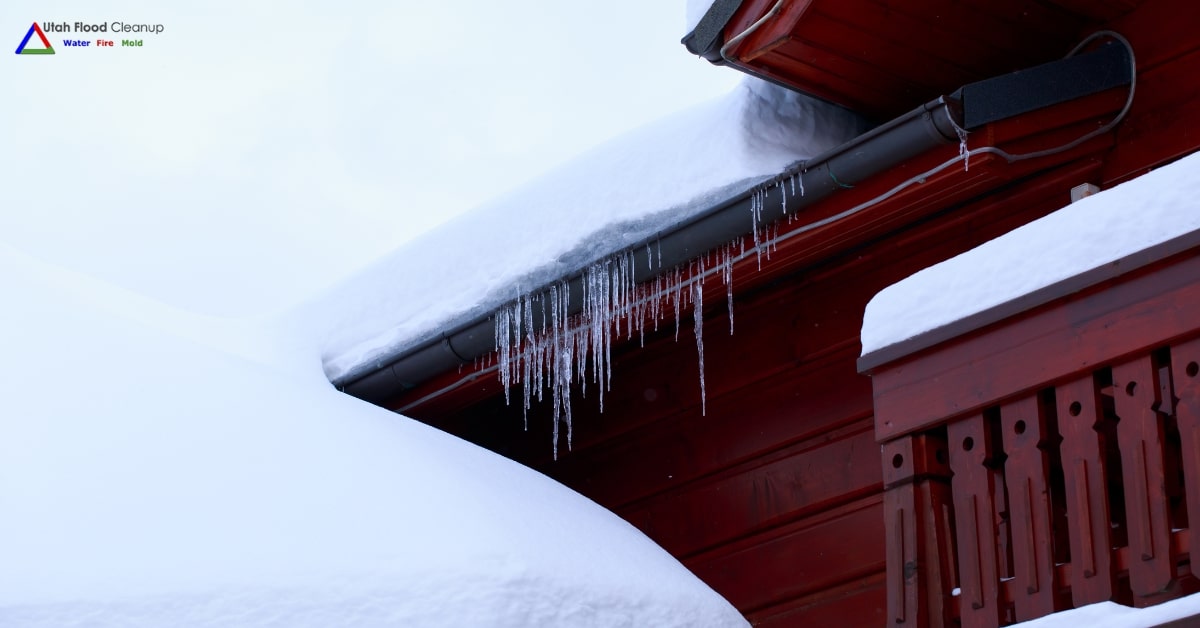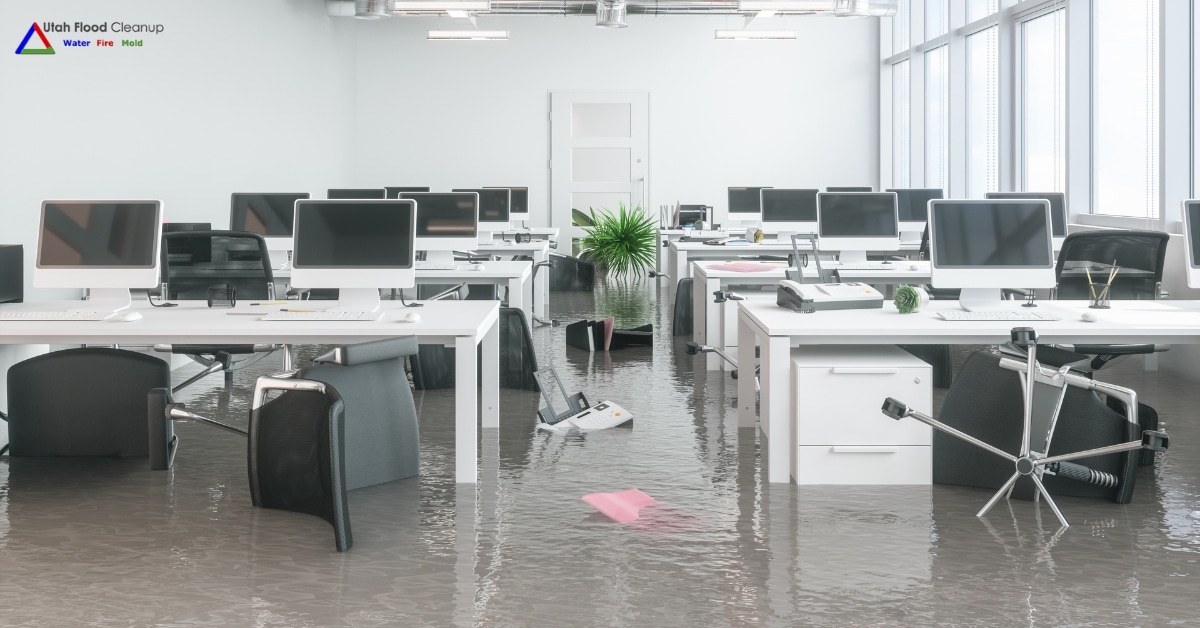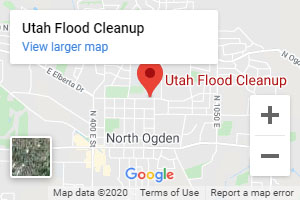To put mold into perspective, a mind-boggling 100,000 species of mold exist! Some are harmless to humans. Others generate some of the deadliest natural chemicals on the planet. Below is a list of some of the most common molds that are either allergens, pathogens, or toxins. To avoid health hazards from mold exposure, it’s worth skimming through the list below for an introduction to the most common types of mold you may encounter.
Click to Jump to Section:
- Classes of Mold
- Hazardous Mold Types
- To Identify Mold in Your Home
- Identifying Mold Found in Utah Homes
- Dangerous Molds Found in Homes
- How to Identify Mold?
- Where to Look for Toxic Mold?
- What to Do if You Find Mold?
- Call the Top Mold Remediation Company
If you’re concerned that you may have mold growing in your home, call the experts to schedule a mold inspection.
What are the Classes of Mold?
Some effects of mold exposure may be mild, whereas others can be extremely toxic. So, mold types are identified as belonging to one of these three classes:
- Allergens: Allergenic molds affect people who have asthma or specific allergies with symptoms including extreme respiratory inflammation.
- Pathogens: Pathogenic molds can cause diseases or infections in babies, elderly people, and people with weak immune systems.
- Toxins: Toxic molds can generate mycotoxins, which are some of the most deadly poisonous chemicals on the planet.
If there is mold in your home, that is an indicator that there is a moisture issue too. A moisture problem, of course, indicates that you will probably have more mold developing. So, if you have noticed or suspected mold in your home, have a professional mold inspection as soon as possible.
Hazardous Mold Types
Here are just some of the most common types of harmful molds to which people may be exposed in their daily lives:
Stachybotrys: This is the notorious black mold. It is among the most toxic species of mold. It is typically found inside houses. This mold species produces mycotoxins that can cause bleeding in the lungs, which is fatal to infants and animals. Black mold often spreads behind walls and ceilings, making it hard to discover.
Memnoniella: This species is also called black mold. It is similar to the Stachybotrys species and has the same human health effects. The distinguishing behavior of Memoniella is that it releases its toxic spores in chains, whereas Stachybotrys releases its spores in clusters.
Alternaria: This is an allergenic species, brownish-black in color. It is among the most widespread molds. It includes many toxic subspecies that trigger hay fever and asthma.
Trichoderma: This mold is white with green patches. It flourishes in damp areas. Some of its subspecies have been associated with pulmonary and liver infections, making those pathogenic members of the Trichoderma group. This mold also has an enzyme that destroys wood and other construction materials and can damage buildings.
Ulocladium: This mold is black and thrives in wet places, such as homes with water damage. It grows in kitchens, bathrooms, and basements. Its two subspecies are both highly allergenic. This mold type can cause severe hay fever and other strong reactions as well as skin infections in some people. Longer exposure can cause difficulty breathing and symptoms similar to asthma.
Cladosporium: This is an allergenic mold. It is brown or dull green, and it can live in cold and warm areas. It often spreads in carpeting, under flooring, and in fabric. Exposure to mold spores of this species can cause a running nose, itching eyes, sore throat, skin infection, and other allergy symptoms. It may also trigger sinusitis, asthma symptoms, or lung infections.
To Identify Mold in Your Home
Some mold types are difficult to detect and remove thoroughly without professional intervention. Identifying molds growing inside your home is naturally important. Flourishing mold can be an extreme danger to your family’s health. The most efficient and safest approach to identifying mold types in your home and eliminating them is to schedule a professional mold inspection and have mold testing.
Keep in mind that identifying mold of some types and removing it is easy enough, but others require a mold remediation specialist to find and thoroughly remove them. Your mold remediation expert will further treat to help prevent mold recurrence.
Identifying Mold Found in Utah Homes
The Most Common Types of Mold in Homes:
- Aspergillus
- Stachybotrys, also known as Black Mold
- Cladosporium
Aspergillus is an allergenic mold that is found in food and air conditioning systems. It looks like what most people think of as mold: green, cottony, and white at the edges. Cladosporium is another type of mold, which grows mostly on the back of toilets. It can range in color from olive green to brown or black, but is not the infamous "black mold" you need to be weary of. It also grows on air ducts and painted surfaces. Both molds are classified as nontoxic, however they can cause allergic reactions in humans.
Brightly colored mold such as red or orange mold is mostly found outdoors. It grows on decaying matter such as rotting wood. It is harmless to humans. These molds, which are usually slimy, is primarily removed from homes for aesthetic purposes. Another mold that grows in homes is white mold. If you have white mold in the home, it means the problem is in its early stages, and it can be treated with ease.
Dangerous Molds Found in Homes
One of the most dangerous molds to humans is Stachybotrys chartarum, which can lead to long-term illness if not treated. It is often called "black mold," though it is not the only black mold you can find in Utah homes. It grows indoors and produces toxins called mycotoxins. Contact with these toxins usually ends up in a hospital visit.
How to Identify Mold?
The mold will usually have a greenish black appearance. Additionally, it will usually appear to be slimy. However, this may not always be the case. The mold can become dry and powdery when its water source runs out. At that point, it can disperse with ease. It is important to have an expert inspect it. This could save you a lot of money spent on getting rid of a harmless mold species that has a similar appearance to black mold.
Some of the most common symptoms that result from black mold are:
- Irreversible damage to internal organs
- Skin inflammation
- Respiratory problems
- Hemorrhage
- Mental impairment
- Fatigue
- Suppression of the immune system
Fusarium and Penicillium are also considered toxic. Fusarium ranges from white to dull yellow while Penicillium can include shades of green. These molds are associated with symptoms such as asthma, nail fungus, and infections of internal organs like the heart, liver, and lungs. They can also lead to pulmonary emphysema and edema. Fusarium usually comes from plants or soil while penicillum often comes from spoiled food, but both can grow elsewhere once introduced into a home.
Where to Look for Toxic Mold?
When toxic mold grows, it will usually be in a place that is out of site. Additionally, toxic mold requires a lot of humidity. Thus, if you have experienced flooding recently, you should inspect your house for toxic mold. This is also the case if you have recently had a pipe leak inside the walls or in your basement.
What to Do if You Find Mold?
When you find mold in your house, you should hire an expert. If the mold affects a large area of your house, you need to vacate the premises until the mold is cleared. This is especially true if you have been experiencing the symptoms of a mold infection.
Call Utah Flood Cleanup for Mold Remediation
Mold Remediation Utah: If you detect the presence of mold or someone in your home is experiencing symptoms that may be due to mold, we’re here to help. Or, if you have had water damage in your home, you may need to have a mold inspection. We are your local mold abatement specialists. Besides mold cleanup, we offer water damage restoration and smoke and fire damage cleanup services available 24/7.
If you’re concerned that you may have mold growing in your home, call Utah Flood Cleanup at (801) 416-2666, or contact us here online to schedule a mold inspection.
Other Related Articles:
- Mold Abatement Experts in Utah
- Mold Fogging in Utah
- Mold Removal Do's and Don'ts
- House Mold Dangers
- 8 Places Mold Grows and What to Do About it
- 5 Mistakes That Cause Mold Growth in Homes
- What You Need to Know About Mold from Water Damage
- Mold Growth During Summer and Spring
- How to Identify Mold in Your Home
- The Importance of Mold Remediation
Latest posts by Utah Flood Cleanup (see all)
- What are the Benefits of Professional Water Damage Repair in Utah? - April 16, 2024
- Dealing with Winter Mold: Who to Call for Black Mold Removal in Utah - March 29, 2024
- Post-Snowmelt Water Damage Restorations: What Utah Residents Need to Know - March 28, 2024
